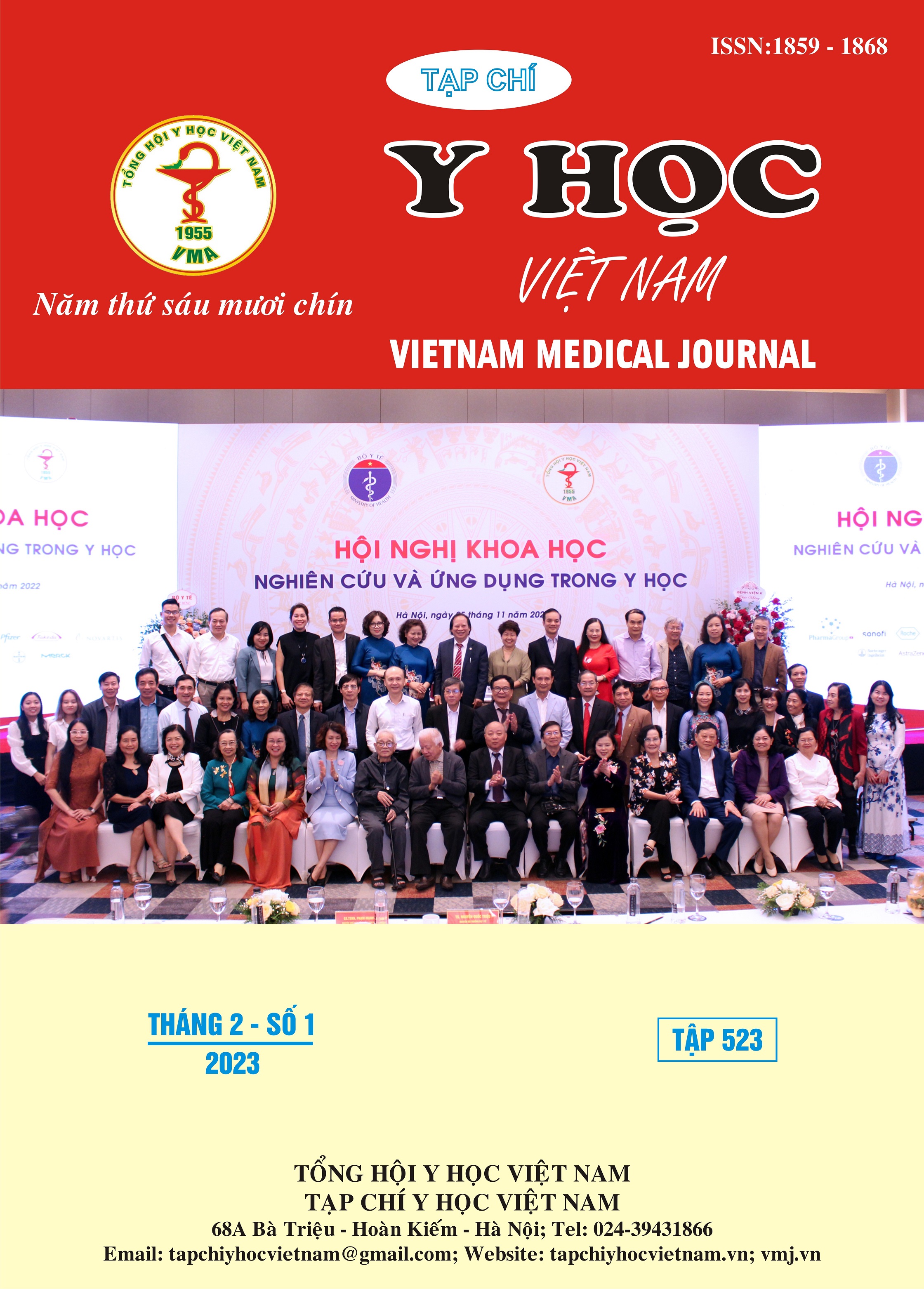ASSESSMENT OF THE SERUM ACID URIC CONCENTRATION IN PATIENTS WITH CHRONIC KIDNEY DISEASE WITHOUT REPLACEMENT THERAPY AT THANH HOA PROVINCE GENERAL HOSPITAL
Main Article Content
Abstract
Objectives: To assessment of the abnormal serum uric acid concentration, the percentage of patients with hyperuricemia and factors related to serum uric acid concentration in patients with chronic kidney disease without replacement therapy at Thanh Hoa Provincial General Hospital. Subjects and methods: a Cross-sectional description study was performed on 195 patients ≥ 18 years old admitted at Department of Nephro-Urology, Thanh Hoa Provincial General Hospital, diagnosed with stage III-V chronic kidney disease without replacement therapy. Results: The average serum uric acid concentration was 500.35 ± 153.60 µmol/L. The proportion of patients with hyperuricemia was 74.4%, highest in patients with chronic kidney disease stage 5 (80.8%). Conclusion: There was a moderate positive correlation between serum uric acid concentration and BMI, disease duration and serum urea concentration. There was no correlation between serum uric acid concentration and age, mean blood pressure and paraclinical indicators. Patients with hyperuricemia had a risk of clinical gout 2,237 times higher than the group without hyperuricemia (OR: 2,237; 95%CI: 1,034 – 4.838).
Article Details
Keywords
Chronic kidney disease, hyperuricemia.
References
2. Nguyễn Văn Tuấn (2021). Khảo sát nồng độ acid uric huyết thanh ở bệnh nhân bệnh thận mạn giai đoạn cuối. Tạp Chí Học Việt Nam, 504(2), 147–151.
3. Hoàng Danh Tân (2015), Nhận xét tình trạng rối loạn acid uric máu ở bệnh nhân suy thận mạn chưa điều trị thay thế tại khoa Thận – Tiết niệu bệnh viện Bạch Mai, Luận văn tốt nghiệp Bác sỹ y khoa, Trường Đại học Y Hà Nội.
4. Doualla M., Halle M.P., Moutchia J. và cộng sự. (2018). Determinants of hyperuricemia in non-dialysed chronic kidney disease patients in three hospitals in Cameroon. BMC Nephrol, 19(1), 169.
5. National Kidney Foundation (2002). K/DOQI clinical practice guidelines for chronic kidney disease: evaluation, classification, and stratification. Am J Kidney Dis Off J Natl Kidney Found, 39(2 Suppl 1), S1-26.
6. De Oliveira E.P. và Burini R.C. (2012). High plasma uric acid concentration: causes and consequences. Diabetol Metab Syndr, 4, 12.
7. Bellomo G., Venanzi S., Verdura C. và cộng sự. (2010). Association of uric acid with change in kidney function in healthy normotensive individuals. Am J Kidney Dis Off J Natl Kidney Found, 56(2), 264–272.
8. Wang H., Wang L., Xie R. và cộng sự. (2014). Association of Serum Uric Acid with Body Mass Index: A Cross-Sectional Study from Jiangsu Province, China. Iran J Public Health, 43(11), 1503–1509.


